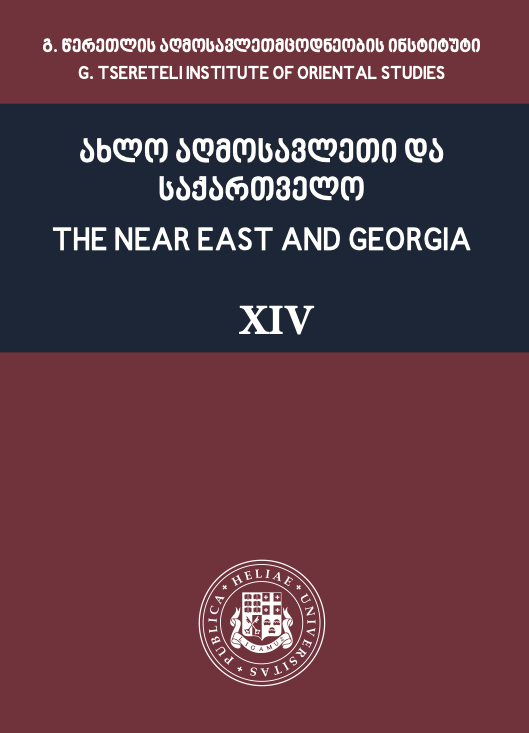სან -ფრანცისკოს სამშვიდობო ხელშეკრულება იაპონურ-ჩინური ურთიერთობების პრიზმაში
DOI:
https://doi.org/10.32859/neg/14/180-197საკვანძო სიტყვები:
სან ფრანცისკოს სამშვიდობო ხელშეკრულება, რეალიზმი საერთაშორისო ურთიერთობებში, ტაივანის პრობლემა, სენკაკუს კუნძულები, ჩინური კონტექსტიანოტაცია
სტატია ეძღვნება იაპონია-ჩინეთის ურთიერთობებში სან-ფრანცისკოს 1951 წლის სამშვიდობო ხელშეკრულების ზეგავლენის მნიშვნელობის შესწავლას. განხილულია შემდეგი საკითხები: ტაივანის პრობლემა იაპონია-ჩინეთის ურთიერთობებში; სენკაკუს კუნძულები სან-ფრანცისკოს კონტექსტში; იაპონია ჩინეთის ,,შეკავების’’ დოქტრინაში. გამოთქმულია მოსაზრება, რომ იაპონიიის ინტერესებში შედის იაპონურ-ამერიკული ალიანსის შენარჩუნება და იმავდროულად სტრატეგიული დიალოგის წამოწყება ჩინეთში, რაც ხელს შეუწყობს რეგიონული წესრიგის გარდაქმნას და გამყარებას.
ჩამოტვირთვები
გამოქვეყნებული
26.03.2025
გამოცემა
სექცია
ისტორია და წყაროთმცოდნეობა
როგორ უნდა ციტირება
სან -ფრანცისკოს სამშვიდობო ხელშეკრულება იაპონურ-ჩინური ურთიერთობების პრიზმაში. (2025). ახლო აღმოსავლეთი და საქართველო, 14(14), 180-197. https://doi.org/10.32859/neg/14/180-197




